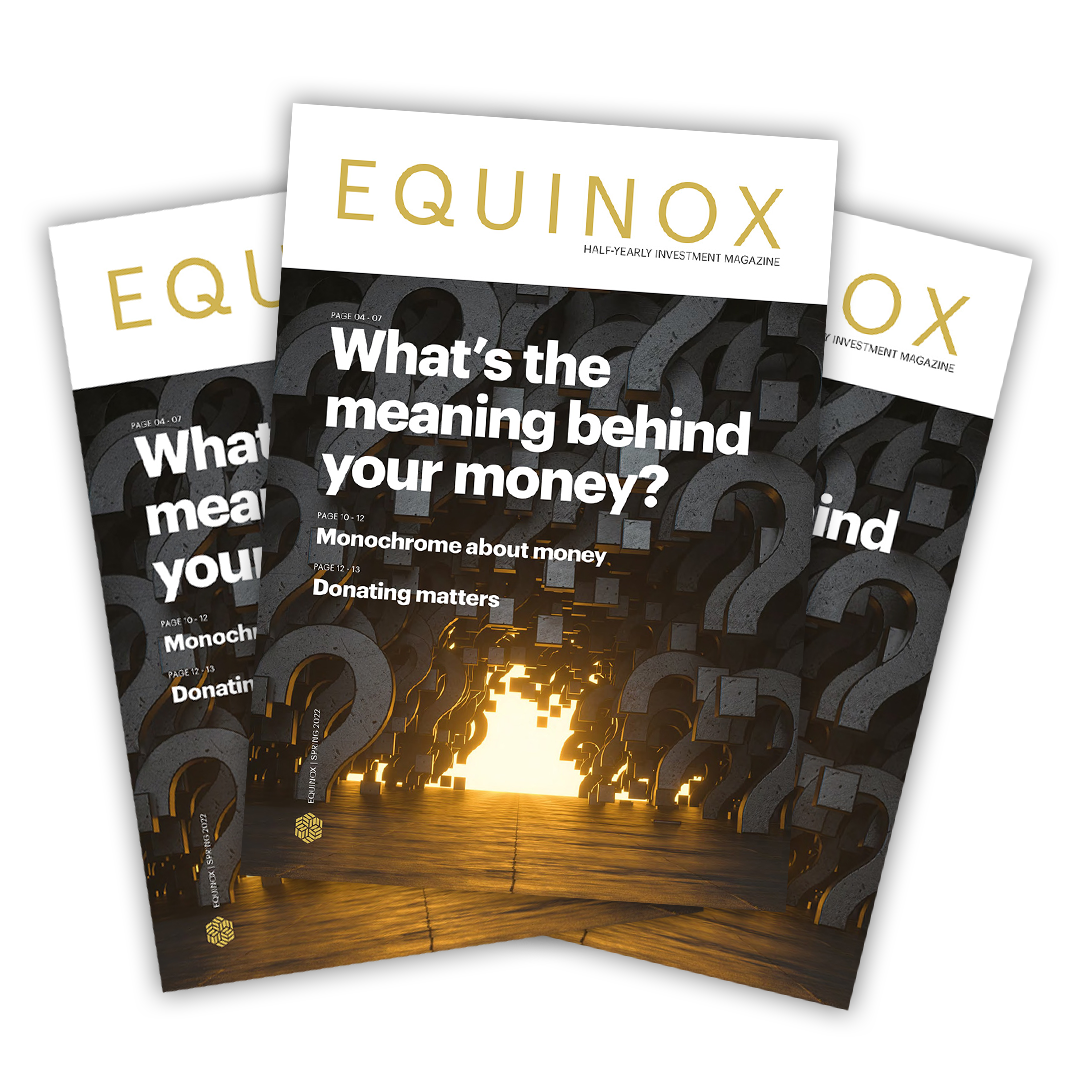Stewardship
Throughout the business world, there is growing discord in boardrooms and at annual general meetings (AGMs), all with stewardship at its heart. A fierce debate is taking place between those claiming shareholder primacy before all else and others who advocate that companies should consider all stakeholders.
Some of these battles have been spilling out onto our streets and into the news headlines. Campaign groups such as ‘Extinction Rebellion’ and ‘Just Stop Oil’ have become household names for their demonstrations, in favour of prioritising climate change action.
Shareholders are the legal owners of all enterprises, but each person needs to answer the key question– what type of owner do I wish to be?
The pen vs the sword
Investors are left facing a choice when disagreeing with corporate managements; engage with management to air their concerns and request they are adequately considered and addressed, or to sell out of their shareholding. Both have their merits and drawbacks.
Engagement is often the first step when these concerns arise and is the preferred option of ownership among professional investors. Taking the time to sit down and talk with a company’s senior management about specific topics related to the company’s social or environmental footprint such as:
- the level of remuneration management proposes rewarding itself.
- promotion of diversity and inclusivity within the workplace.
- whether there is set emissions reductions targets in place.
- any operations which may be damaging to biodiversity.
If the investor would like to see an end to a potential issue, they can inquire as to what plans the company has in place to tackle the issue.
Unfortunately, the resolutions to these discussions are not always satisfactory. At which point, investors face a choice, to divest or use their legal authority to vote against the management.
Divestment can be a material concern for some companies, Royal Dutch Shell, specifically references this as a risk to their business within their annual report. Peabody Energy, the world’s largest coal firm at the time, filed for bankruptcy in 2016, largely due to divestment which starved the company of capital.
However, selling is not always the right answer and can result in ownership transferring from those who desire change to those who are resistant to it. Whilst divestment contributed to Peabody’s downfall, some investors unconcerned with societal or environmental issues have sought to take advantage of the fire sale of assets, viewing them as an opportunity to purchase ‘cheap’ assets. These new owners have no desire to reform the operations of the business and can ultimately exacerbate the problem by giving management an excuse not to reform their ways.
This leads us to the topic of price. A savvy investor seeks to find promising securities at attractive valuations. The price you pay ultimately determines the return on your investment. However, the concept “price” is intriguing; is it more than just a measure of money? What about the damage done to the environment, nearby communities, or people’s livelihoods? If we want to be responsible owners and investors, shouldn’t we also try to promote a re-examination and development of a more inclusive concept of price?
Big stick diplomacy – the power of proxy voting
Franklin D Roosevelt coined the phrase “speak softly and carry a big stick”. Investors have the right to vote against management and even put out their own motions for voting at AGMs if engagement does not produce the results they are looking for.
An issue here, especially in the U.S., is duality, where the Chief Executive Officer (CEO) is also chair of the board of directors. Ordinarily, a CEO is directly accountable to the board of directors and the chair manages the board. However, where the individual holds both roles, the CEO essentially reports to themselves. This is not conducive to an effective management structure which enforces accountability.
Strength in numbers
Getting shareholder proposals voted through is not always easy.
The rise in passive index investing has distorted the shareholding rosters of most listed companies. Certainly, among the S&P 500, the U.S. main index, ownership is dominated by the large index tracking giants. Unfortunately, the teams responsible for stewardship at these firms are often curtailed by internal policy, not able to bring about their own shareholder proposals or dislike “being prescriptive” to company management.
Increasing numbers of investors believe there is one way to approach responsible ownership – it must be active and for the benefit of society and the environment; it must be progressive.
With this in mind, a number of collaborative groups have formed, allowing investors to unify their voice and combine their votes, in an effort to be more persuasive.
Reporting – what does it mean?
There are a number of shareholder pressure groups. The Net Zero Asset Owners Alliance (NZAOA) is one such initiative, that claims to represent 273 asset managers with $61 trillion assets under management. The aim of the initiative is to “deliver bold commitment to transition investment portfolios to net zero greenhouse emissions by 2050.” Unfortunately, research published by pressure group ‘The Sunrise Project’ found disparity between engagements and the actual voting practices of members and cited “a lack of ambition” with “asset owners reluctant to push emitters to actually shift their business models”. (Source: Net Zero Asset Owners fail to nail engagement – Reclaim Finance)
To date, the most prominent initiatives focus on company reporting of emissions or other environmental, social and governance (ESG) topics and the voting reflects this, with asset managers seemingly satisfied if companies have sufficiently reported their activities.
Alas, reporting is meaningless unless action is taken.
The way forward
The science-based targets initiative (SBTi) has aimed to rectify this. As a group of climate scientists and scholars with prominent supranational influence such as the UN IPCC & International Energy Agency (IEA), the aim is to verify a company’s emissions reduction target based on climate science. It is a stamp of approval that a firm’s plan to cut emissions will genuinely lead to a lower forecast increase in global temperatures. We believe this form of monitoring is the way forward.
Regrettably, whilst companies have been keen to state their “net zero” commitments, most corporate plans to decarbonise, do not withstand the scrutiny of the experts.
Investment managers and the finance sector in general, need to be progressive in their ownership, make bold requests of investee company managements, and hold them to account for shortfalls. Only then, can it truly call itself active and responsible.
This blog is intended as an informative piece and does not construe advice. If you have any further questions, please don’t hesitate to get in touch with us using the form below or by reaching out to your usual Equilibrium contact.

